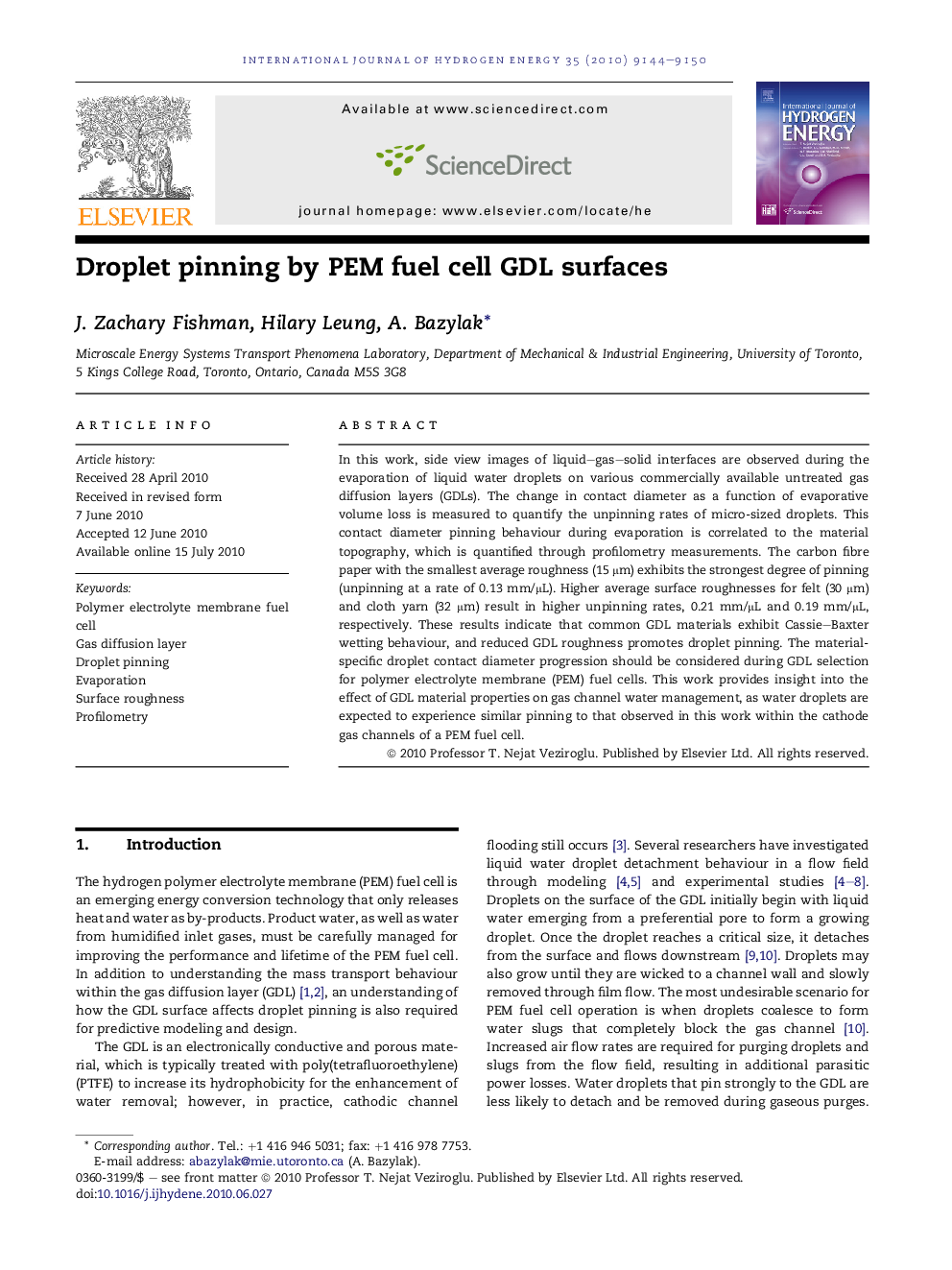| Article ID | Journal | Published Year | Pages | File Type |
|---|---|---|---|---|
| 1276969 | International Journal of Hydrogen Energy | 2010 | 7 Pages |
In this work, side view images of liquid–gas–solid interfaces are observed during the evaporation of liquid water droplets on various commercially available untreated gas diffusion layers (GDLs). The change in contact diameter as a function of evaporative volume loss is measured to quantify the unpinning rates of micro-sized droplets. This contact diameter pinning behaviour during evaporation is correlated to the material topography, which is quantified through profilometry measurements. The carbon fibre paper with the smallest average roughness (15 μm) exhibits the strongest degree of pinning (unpinning at a rate of 0.13 mm/μL). Higher average surface roughnesses for felt (30 μm) and cloth yarn (32 μm) result in higher unpinning rates, 0.21 mm/μL and 0.19 mm/μL, respectively. These results indicate that common GDL materials exhibit Cassie–Baxter wetting behaviour, and reduced GDL roughness promotes droplet pinning. The material-specific droplet contact diameter progression should be considered during GDL selection for polymer electrolyte membrane (PEM) fuel cells. This work provides insight into the effect of GDL material properties on gas channel water management, as water droplets are expected to experience similar pinning to that observed in this work within the cathode gas channels of a PEM fuel cell.
